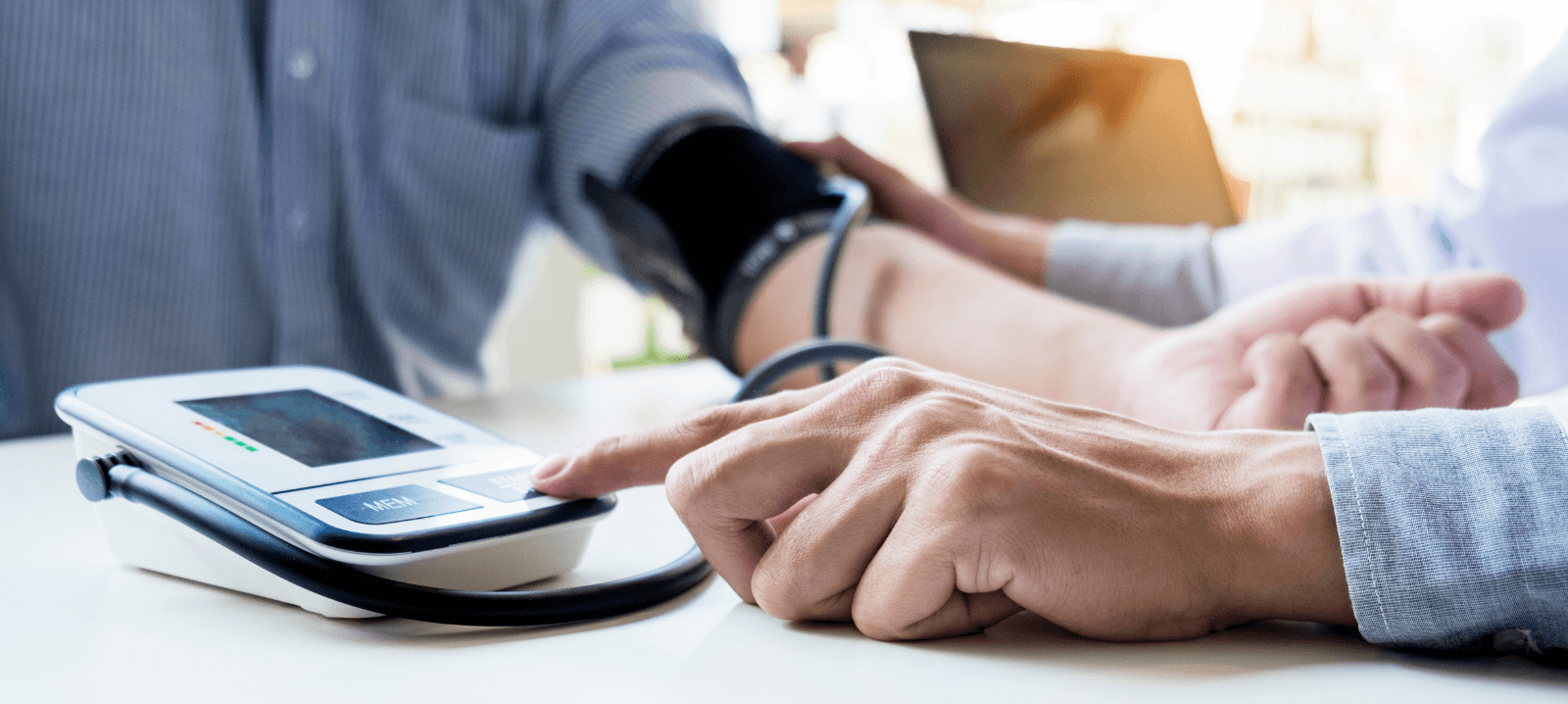





No lab centers are available in this city
Home > Symptoms > Low Blood Pressure (Hypotension) Symptoms - Causes, Diagnosis & Treatment | Max Lab

Low Blood Pressure also known as Hypotension, is a reading of blood pressure under 90/60 mm/Hg. It frequently has no symptoms in People. When symptoms do appear, they are typically unpleasant or disruptive, including dizziness, fainting, and more. Early detection and treatment of hypotension are crucial since it can be deadly in some circumstances.
When your blood pressure is substantially lower than you would expect, you have hypotension, or low blood pressure. It can occur as a standalone disorder or as a sign of a variety of other conditions. Although it might not produce symptoms, if it develops, it could need to be treated by a doctor.
Low Blood Pressure (Hypotension) has two definitions:
Two figures, top and bottom, both expressed in mm/Hg, are used to measure blood pressure.
Many modern medical devices can automatically measure your blood pressure, thanks to technological advances. The conventional stethoscope method of measuring blood pressure is no longer advised; these gadgets should be used instead.
Some patients with low blood pressure show no signs of the condition. In this, people with low blood pressure are safe.
However, showing only one or two signs could indicate a problem. the following: low blood pressure can lead to:
Some individuals may only experience low blood pressure symptoms when standing. Orthostatic hypotension is what is meant by this. Normally, this is not dangerous unless a person's blood pressure suddenly drops due to postural shifts, which could result in fainting.
Low blood pressure can result in shock in more severe circumstances. A dangerous medical emergency known as a shock is brought on by decreased blood flow throughout the body. This can result in damage to organs at the cellular level.
The symptoms of shock include the following:
 Allergy Test
Allergy Test
 Anemia Test
Anemia Test
 Auto immune
Auto immune
 Blood disorder
Blood disorder
 Bone and Joint
Bone and Joint
 Cancer Test
Cancer Test
 Cardiology Test
Cardiology Test
 Covid Recovery
Covid Recovery
 Dengue Test
Dengue Test
 Depression
Depression
 Diabetes Test
Diabetes Test
 Fatigue
Fatigue
 Fever Test
Fever Test
 Full body
Full body
 Gastro Test
Gastro Test
 Gastrointestinal
Gastrointestinal
 Gynaecology Test
Gynaecology Test
 Heart Test
Heart Test
 HIV Test
HIV Test
 Hormone Test
Hormone Test
 Hypertension
Hypertension
 Immunity Test
Immunity Test
 Infectious Disease
Infectious Disease
 Infertility Test
Infertility Test
 Influenza Test
Influenza Test
 Iron Test
Iron Test
 Kidney Test
Kidney Test
 Liver Test
Liver Test
 Lung Test
Lung Test
 Nephrology
Nephrology
 Obesity
Obesity
 Orthopedics Test
Orthopedics Test
 Physician
Physician
 Pollution Health Checkup
Pollution Health Checkup
 Pregnancy Test
Pregnancy Test
 Prostate Test
Prostate Test
 Senior Citizen Test
Senior Citizen Test
 STD Test
STD Test
 Thyroid Test
Thyroid Test
 Tuberculosis Test
Tuberculosis Test
 Vitamin Test
Vitamin Test
 Women Health Test
Women Health Test
Sign up takes less than 60 secs and gives you access to your offers, orders and lab tests.
Looks like you are not registered with us. Please Sign up to proceed
OTP will be sent to this number by SMS
We have successfully received your details. One of the agents will call you back soon.
 To reach our help desk call 9213188888
To reach our help desk call 9213188888
No Lab Centers are available in this city
Looks like you are not registered with us. Please Sign up to proceed
OTP will be sent to this number by SMS
Not Registered Yet? Signup now.Looks like you are not registered with us. Please Sign up to proceed





 7982100200
7982100200.png)